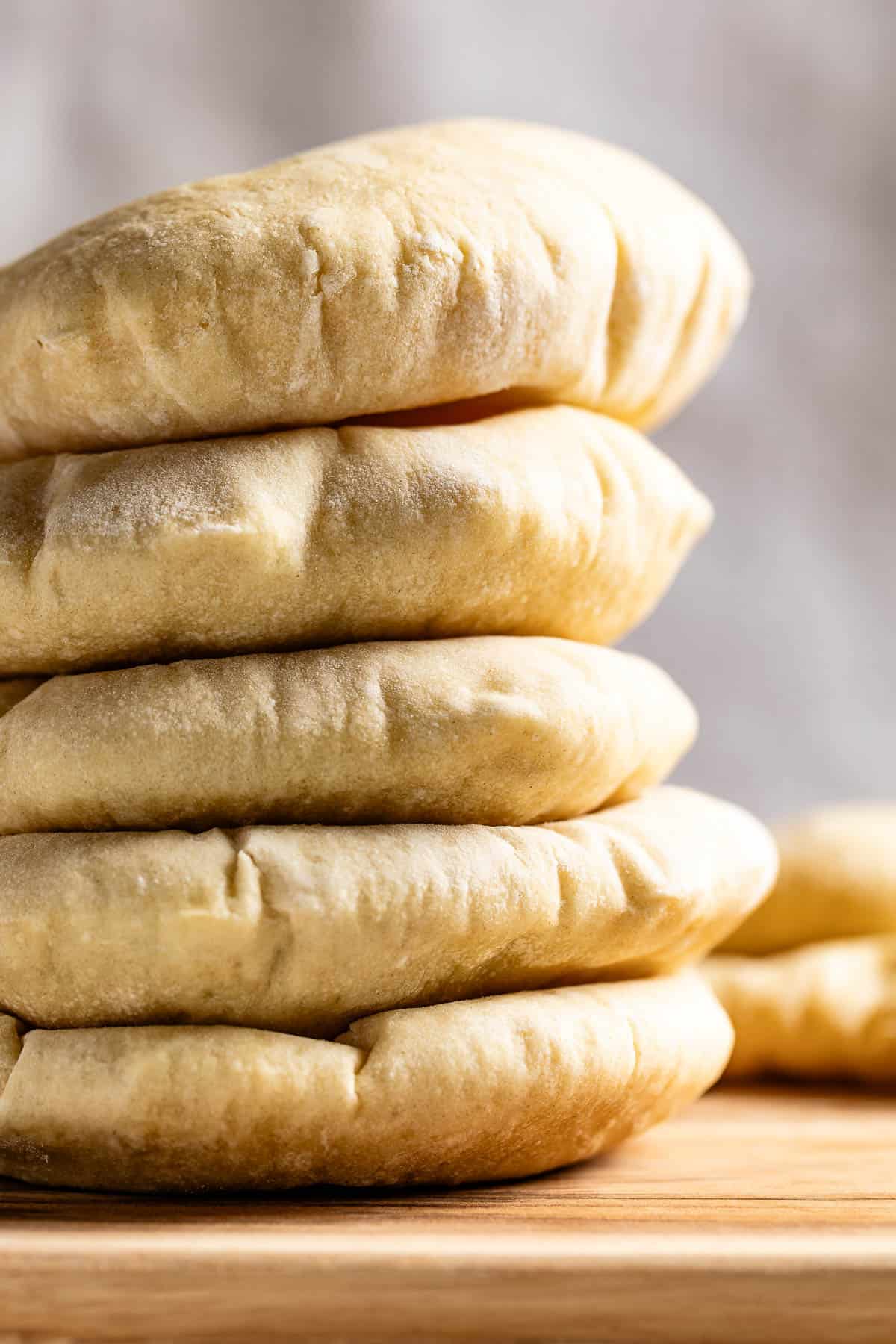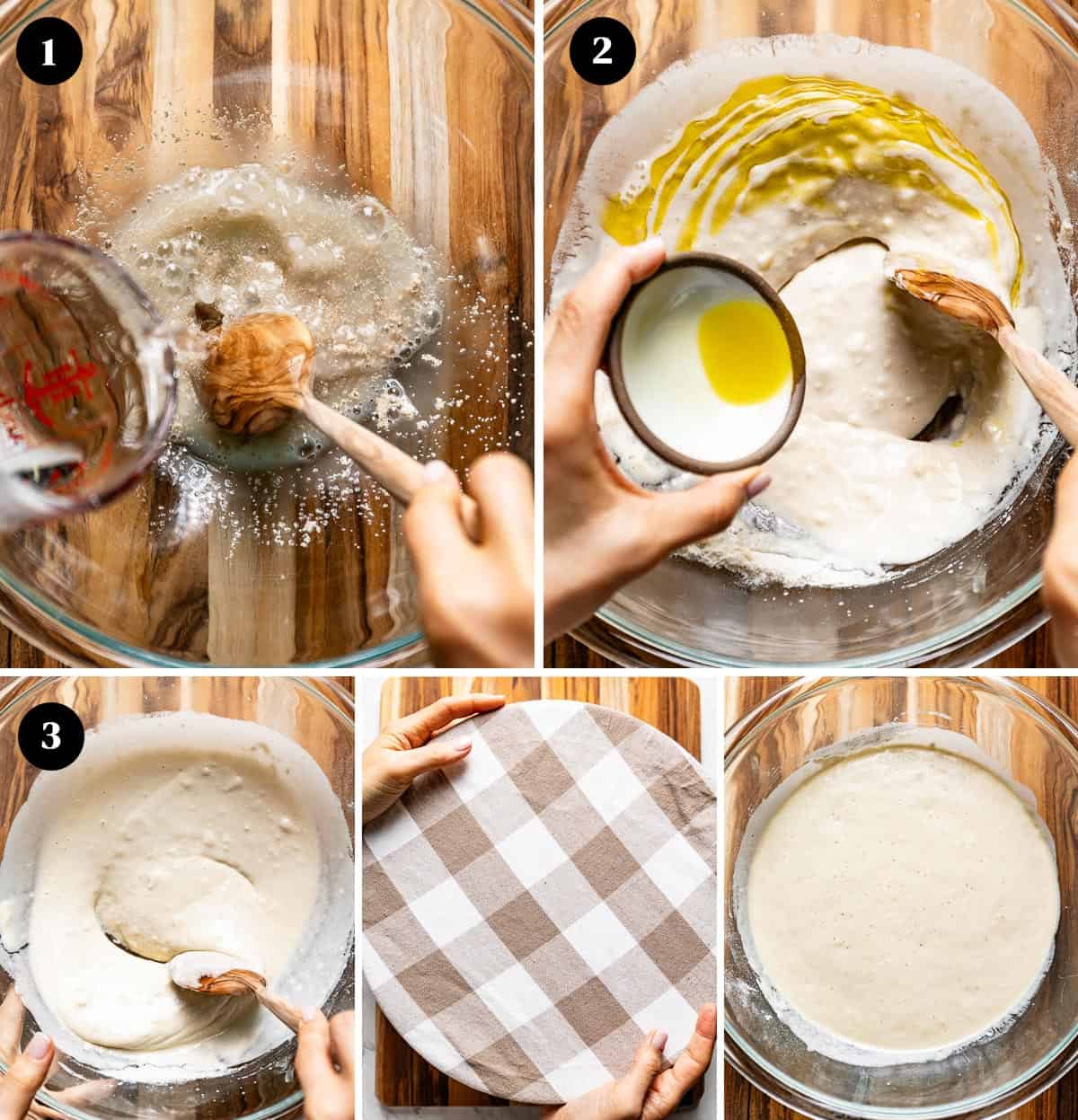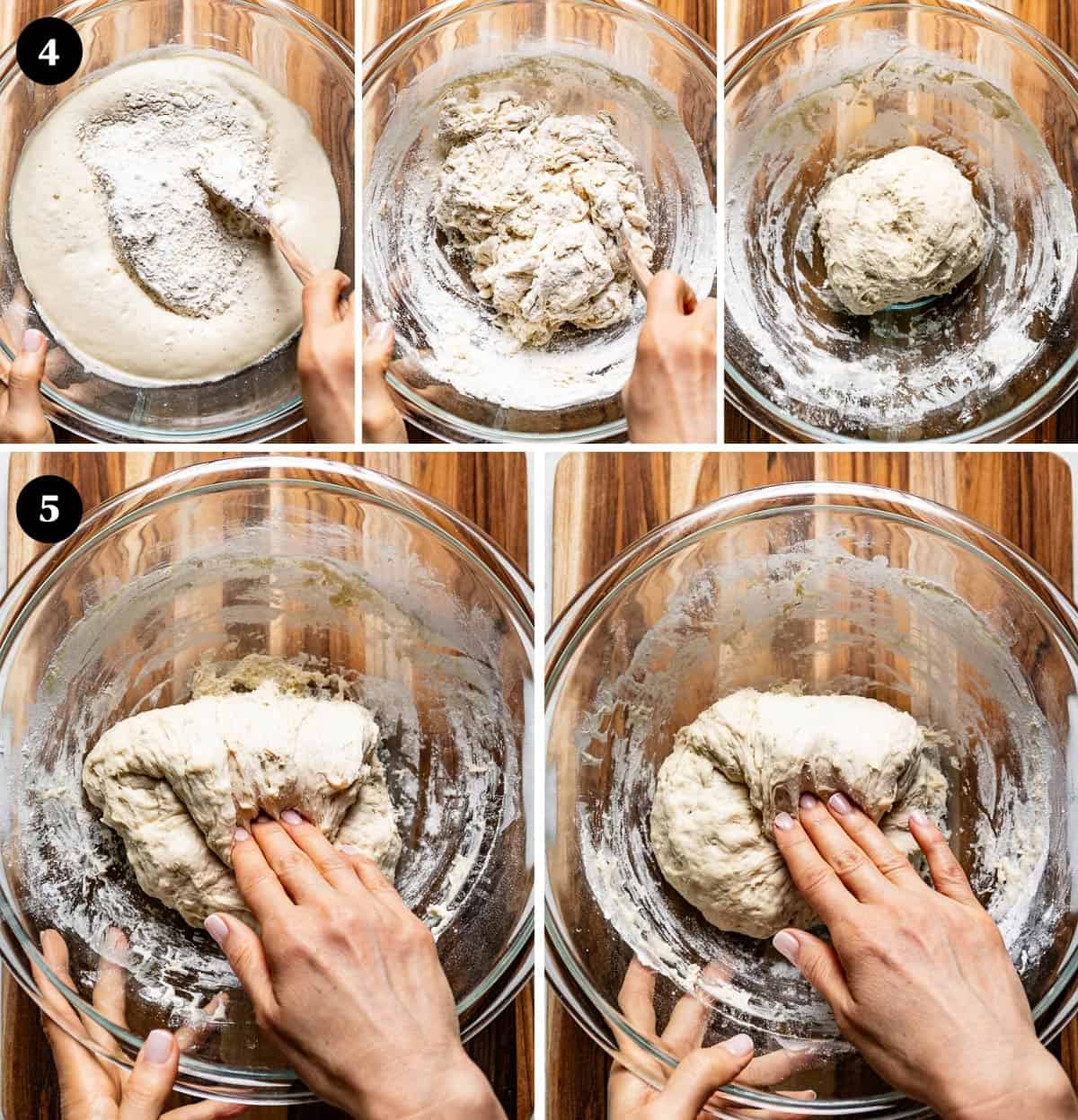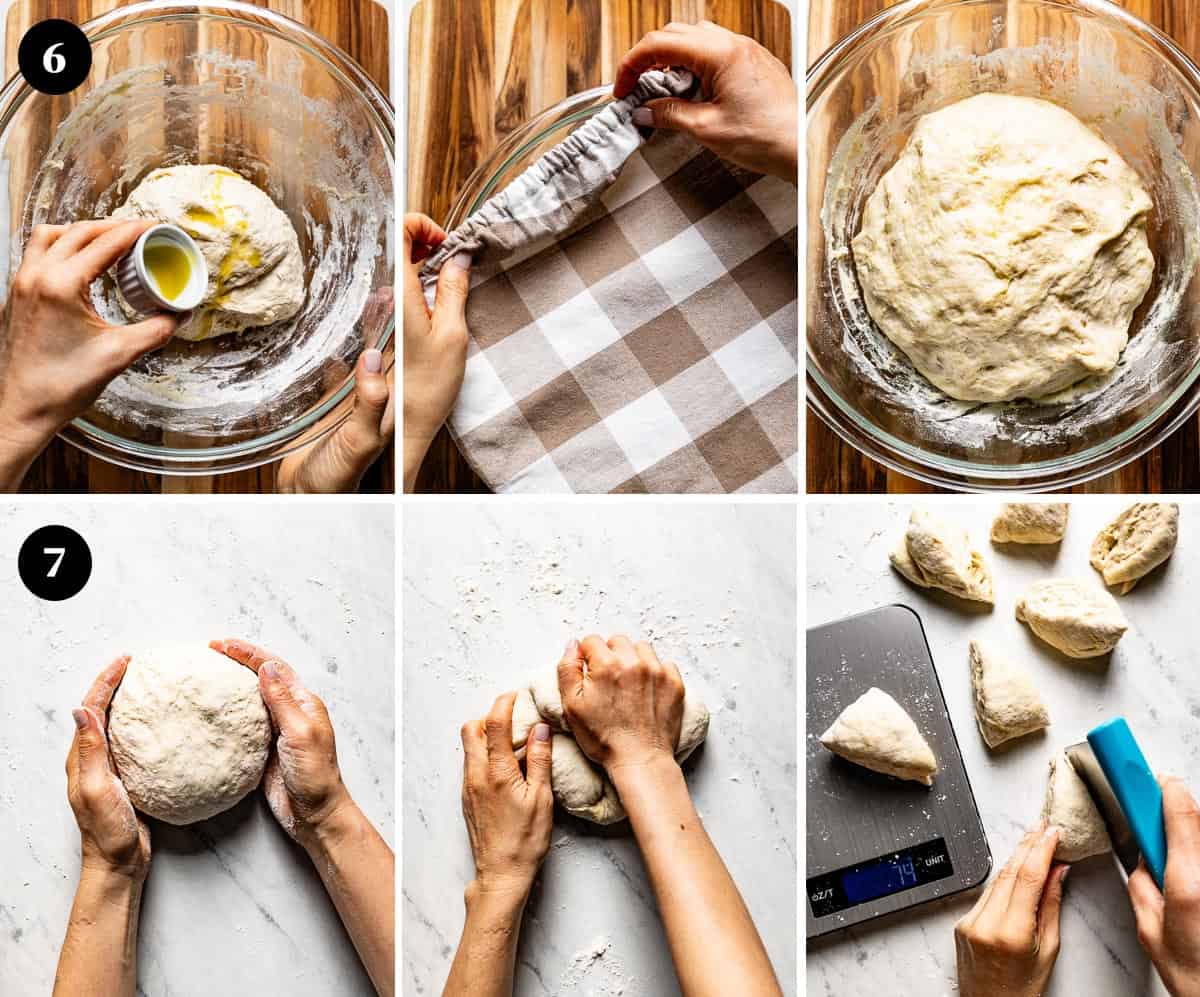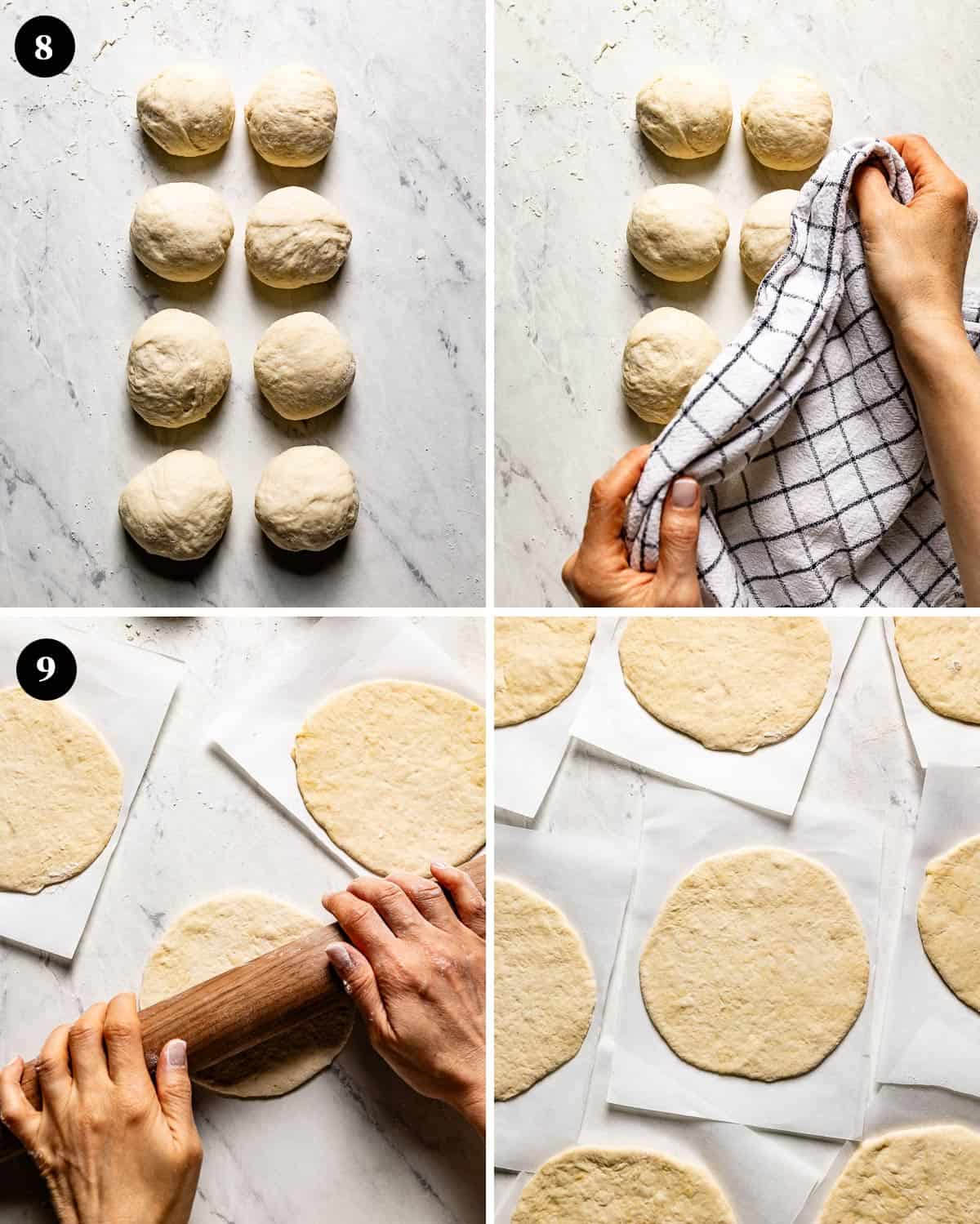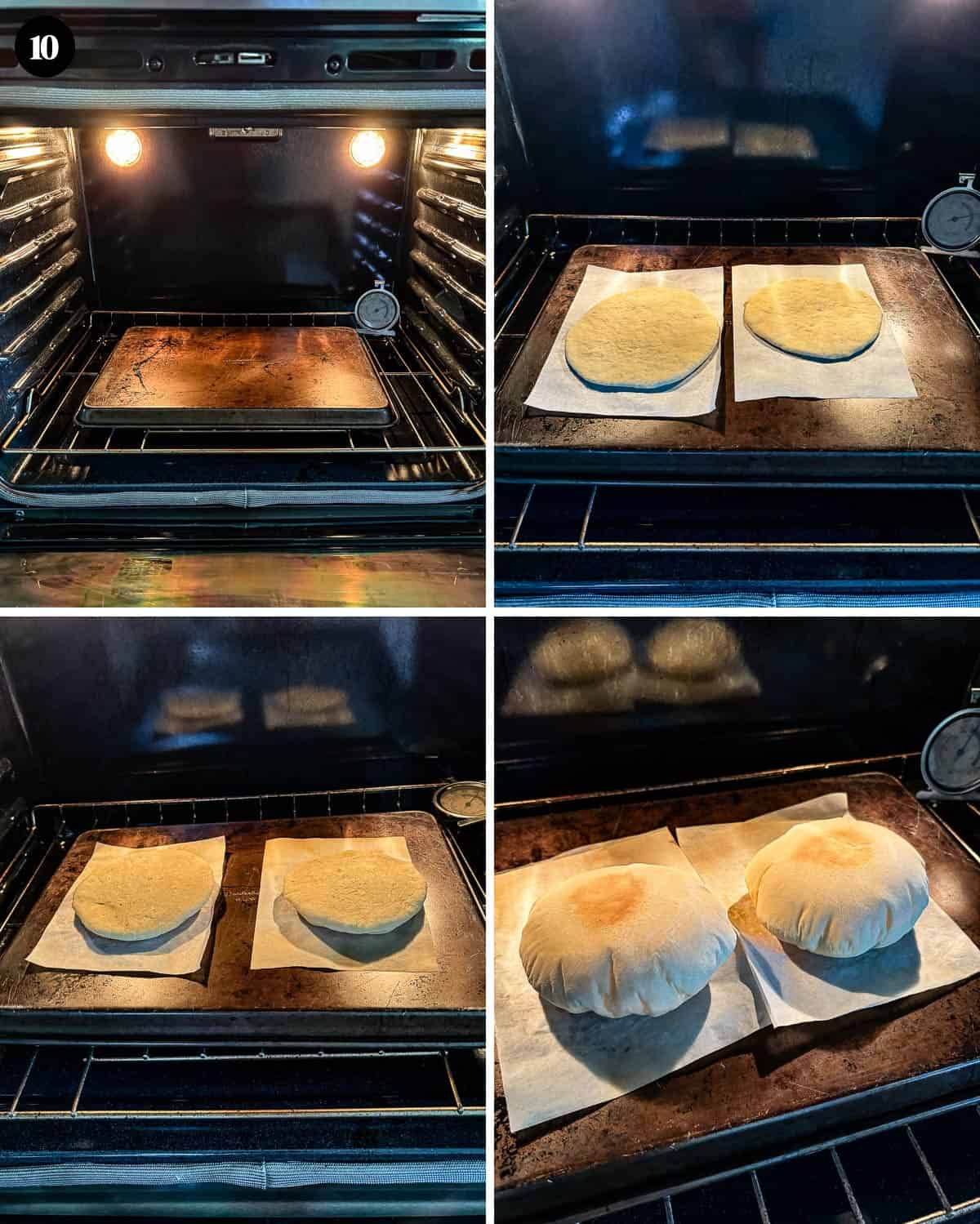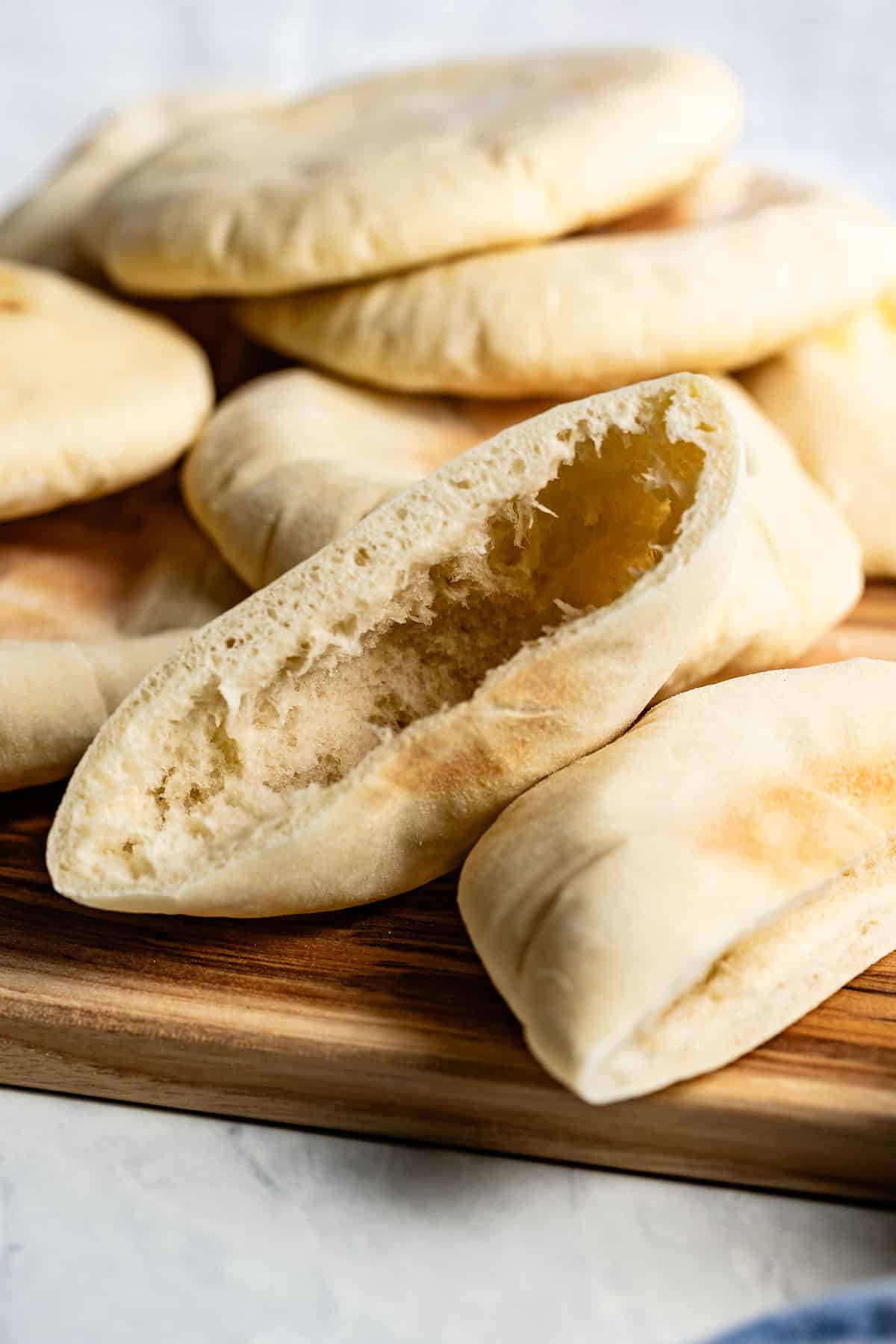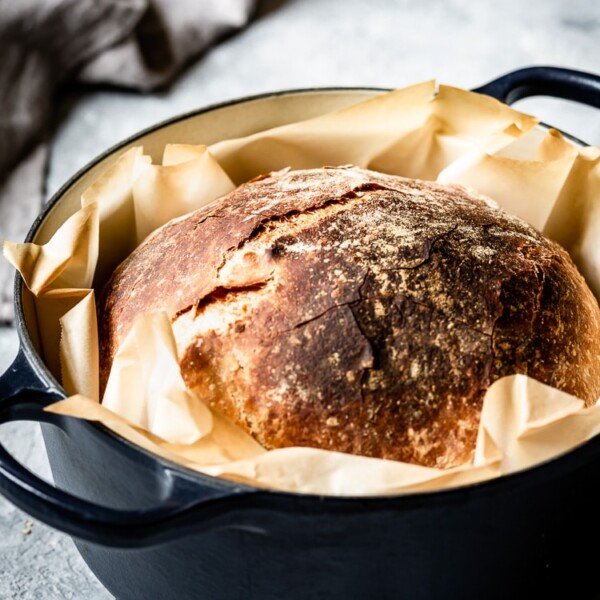What is Pita Bread Made Of?
There are only six simple ingredients in pita bread, making this recipe a cost-effective way to flex your baking skills (and it tastes so much better than store-bought pita!).
Water: It’s essential that your water is lukewarm (about 105-110 degrees F. or 40-43 degrees C) before adding it to your pita mixture. If the water is too hot, you’ll kill the yeast, but if it’s too cold, the yeast won’t “bloom.” Active dry yeast: I used active dry yeast in this pita dough recipe, which required me to “activate” the yeast before adding other ingredients. Of course, you can use instant dry yeast, but your dough will rise more quickly, and the recipe’s timing will be shorter. Granulated sugar: Sugar is vital among your pita bread ingredients, as it helps activate and fuel the yeast (in addition to giving it a lightly sweet, tender flavor!). To make this recipe refined sugar-free, you can use cane sugar instead. All-purpose flour: I used all-purpose flour in my pita, but you may use bread flour instead if desired. However, keep in mind that bread flour has a higher protein content than all-purpose flour, which can give your pita a slightly chewier texture and a bit more structure. I would stick to all-purpose flour for light and tender pita bread, similar to store-bought pita bread. Olive oil Kosher salt
Make ahead: Want to turn this dough into an overnight pita recipe? Simply make your pita dough one day in advance and store the raw dough in the refrigerator until you are ready to bake. Take it out an hour before you are prepared to turn it into balls, and follow the recipe as written. Storage: To store cooked pita bread, let it come to room temperature and place it in an air-tight container. The bread will then stay fresh in the refrigerator for 3-4 days. Freezing: When freezing your DIY pita bread, begin by letting the loaves cool to room temperature. Then, wrap them in plastic film and transfer them to a freezer-safe Ziploc bag with as much air removed as possible. Your pita will stay fresh in the freezer for up to three months. Thawing and reheating: You don’t need to thaw your frozen pitas before reheating. Instead, place them directly into a toaster or low-heat oven (300 degrees F.) for 3-4 minutes or until heated.
Digital scale: If you have a digital scale, I highly recommend using it for this quick pita bread recipe. It is especially helpful when dividing the dough into small bowls, helping you achieve evenly sized pita pockets. Lukewarm water: Water temperature is the key to letting your yeast work its magic. Be sure to use lukewarm water (about 105-110 degrees F.), as too-hot water will kill the yeast, and too-cold water will keep the yeast from blooming. Bottom rack vs. top rack: Direct heat is necessary when developing beautifully browned pocket bread. Therefore, you should always bake your pita on the bottom rack of your oven—not the top—and be sure to place parchment paper under each of your pita rounds while baking. Maintaining the oven temperature: The best way to make fluffy pita bread with an open pocket is to keep the oven consistently hot. Be sure to set your oven to 500 degrees F. (or 450 degrees F., depending on how hot your oven can get). I also recommend baking two pita rounds at a time to avoid overcrowding the baking sheet (or pizza stone). A word on browning: When we tested this recipe, we tried to achieve a golden brown color during baking. However, regardless of how many times we tried, increasing the amount of oil and sugar or even the baking time resulted in a light golden-yellow color. So, in short, the color you see in the photos is true to what you will end up with when you make this recipe. Using whole wheat flour: To make a whole wheat pita bread recipe, mix one cup of whole wheat with two cups of all-purpose flour. Whole wheat flour is heavier, and using too much will prevent your pita bread from rising or developing its signature “puff.” Gluten-free: To make this pita recipe for gluten-free diets, substitute the all-purpose flour with an equal amount of gluten-free flour. Here in the US, Bob’s Red Mill’s gluten-free 1-1 baking flour (affiliate link) is a good brand you can use.
If you make this Homemade Pita Bread recipe, I would greatly appreciate it if you could take a minute to rate it and leave a comment below. It is a great way to support this website and help those planning to make it. Also, if you took pictures, I’d love to see them. Share your creations on Instagram using #foolproofeats so I can share them with the Foolproof Living community.
Fill the pockets: It goes without saying that making pita pockets is one of the most classic uses of pita bread—especially when packed with authentic Middle Eastern flavors! I love filling my pita with succulent, savory meats, like Beef Shawarma, Chicken Shawarma, and gyros. Or, you can make a tender, light lunch by using one of my favorite easy pita bread fillings: my Chickpea and Tuna Sandwich recipe! Make a wrap: Making a pita wrap is another one of my go-to meals using pita bread. Tasty, customizable, and portable, this serving option is excellent for on-the-go lunches and weeknight dinners alike. I especially like to use freshly baked pitas to make Pita Wraps with Chicken—a succulent, flavorful dish you can dress up with my Tzatziki or Tahini Lemon Sauce. Make chips: You can easily transform this pita bread bake into appetizer-ready pita chips by drizzling the loaves with olive oil, seasoning them with salt and pepper, and baking them until crispy—just like I do in my Mediterranean Nachos Recipe. Or, you can use it as a crunchy-soft addition to your favorite homemade Cava bowl recipes. Serve with dips: Light, tasty, and versatile, this easy homemade pita bread is just what you need to fill out a dip platter. This Middle Eastern bread is especially delectable when paired with classics like my smoky Baba ganoush, creamy Hummus, tangy CAVA Feta dip, or savory-sweet Muhammara. Serve it as bread: Fluffy, light, and fully dip-able, pita bread makes an excellent accompaniment to saucy dishes, soups, and stews. You can make a gourmet Indian meal with ease by serving your pita along with curry dishes, like Chicken Chickpea Curry, or you can use it to sop up every last drop of internet-famous Alison Roman’s Stew. Make pizza: You don’t need to deal with complicated pizza dough when you have this simple pita recipe on hand. With a few simple toppings, you can make a pita flatbread to rival any carryout pizza.
No Knead Artisan Bread
Homemade No-Knead Olive Bread Recipe
Best Challah Bread Recipe
This Recipe is:

